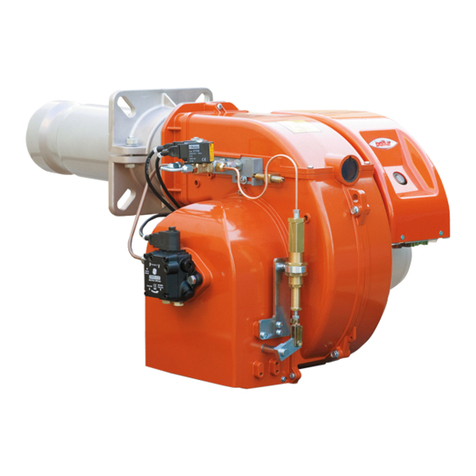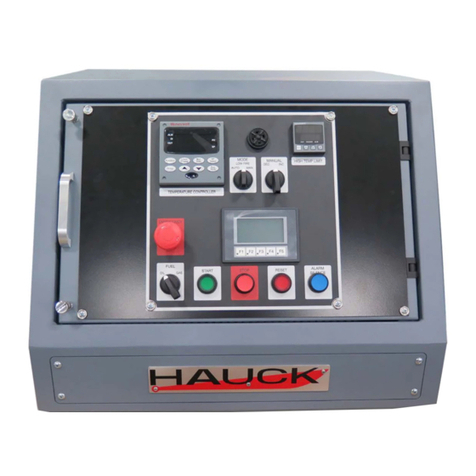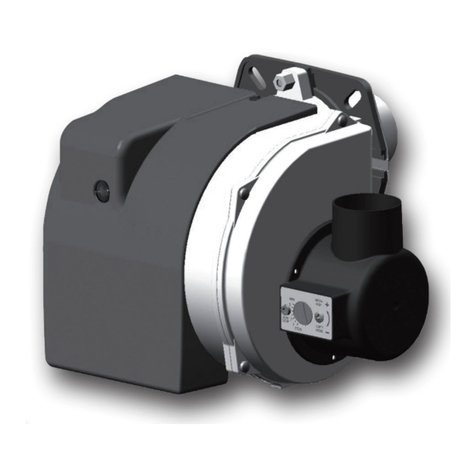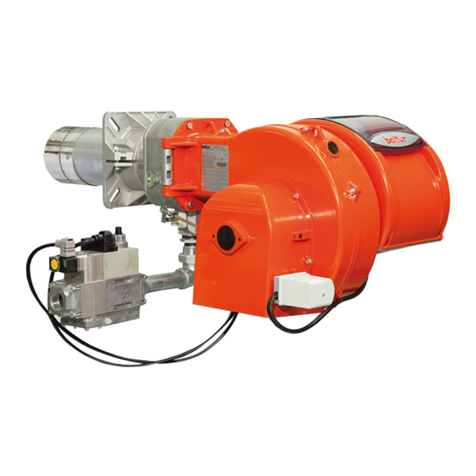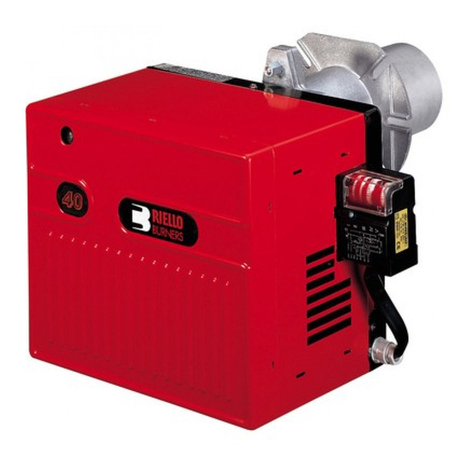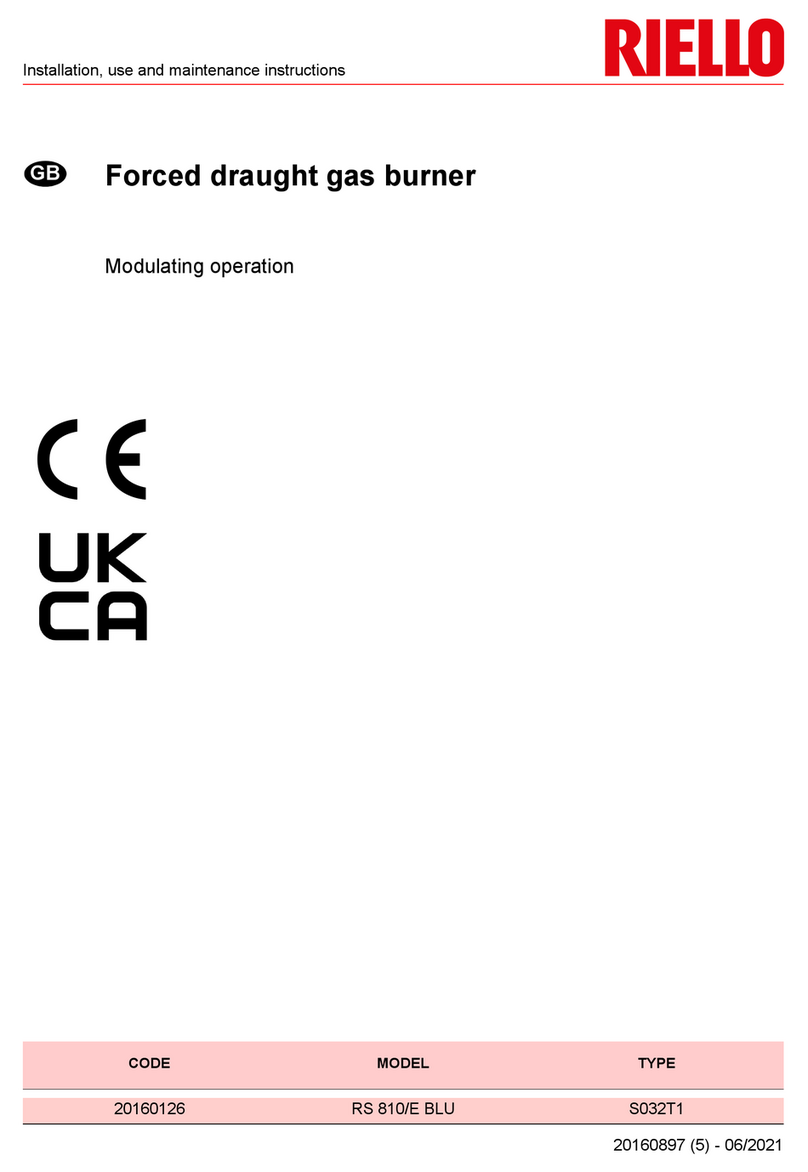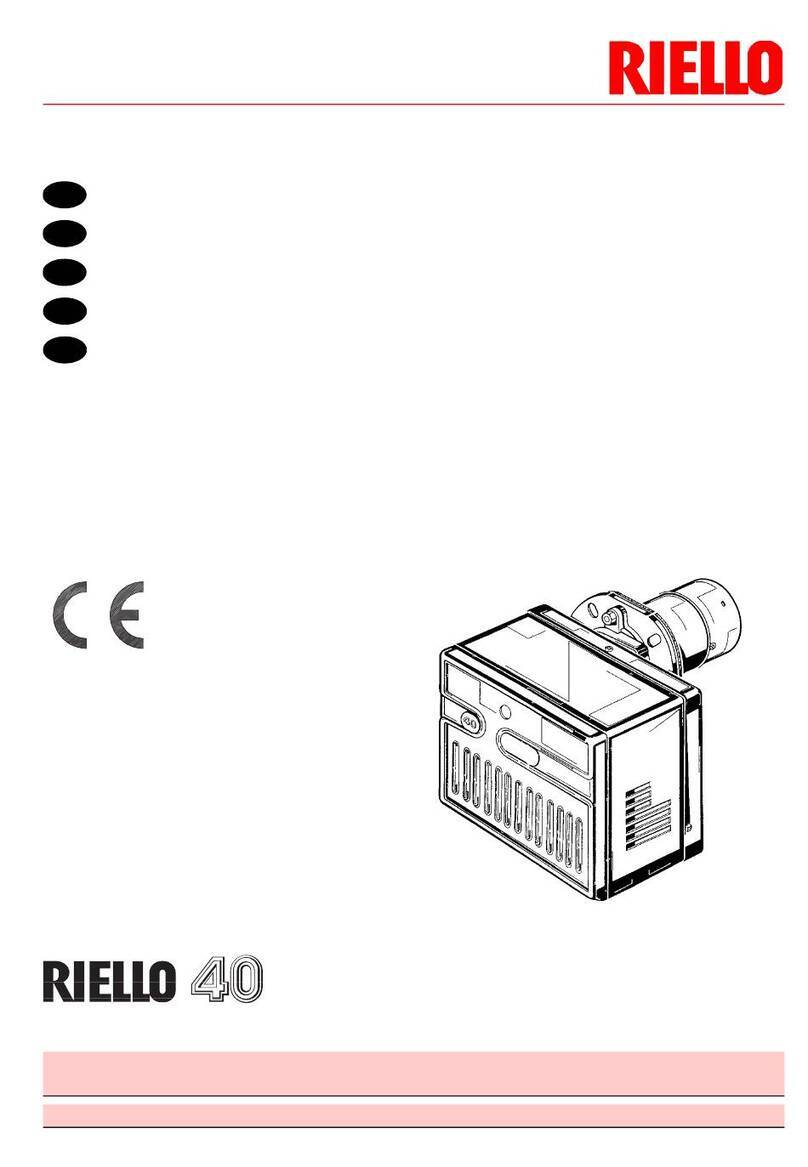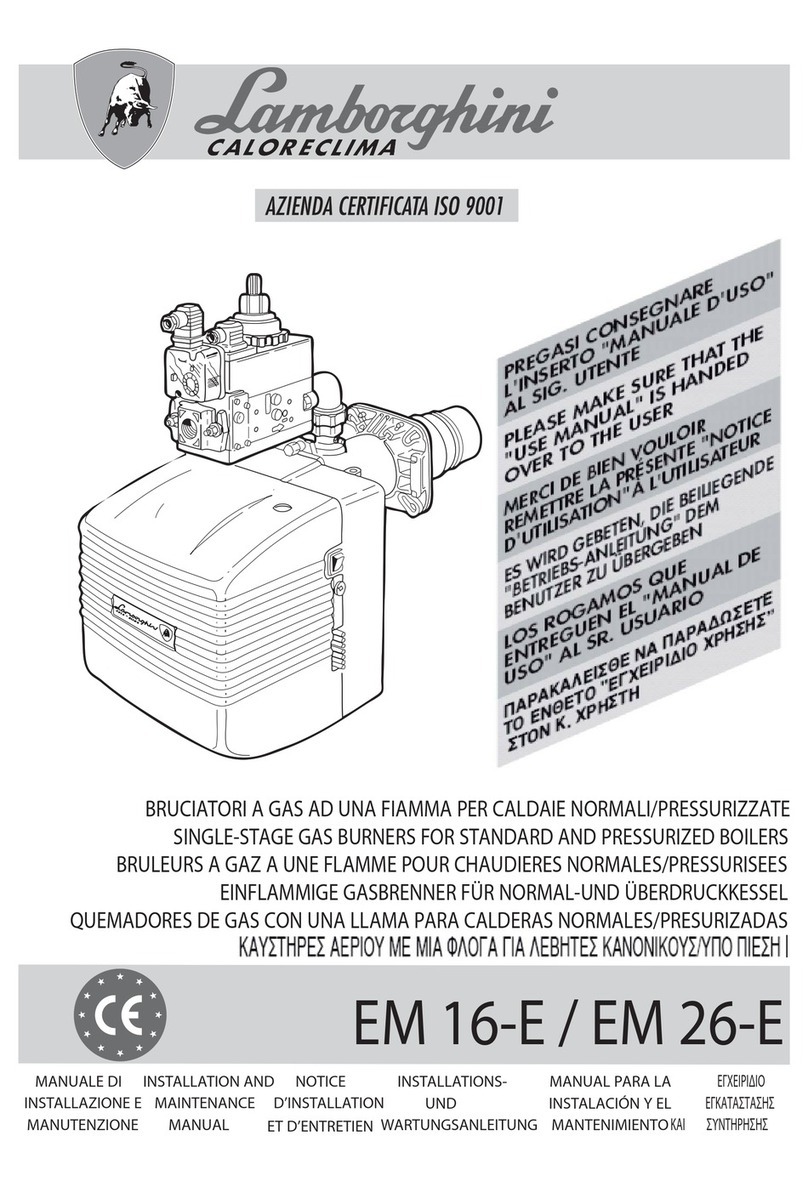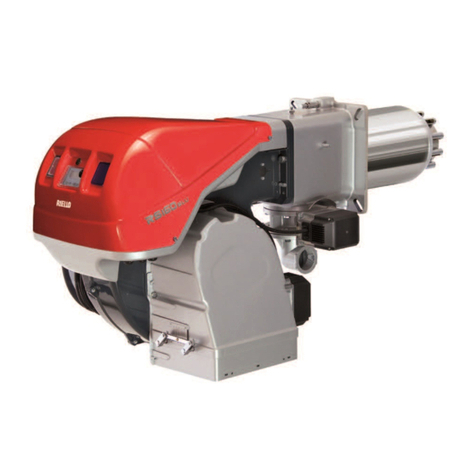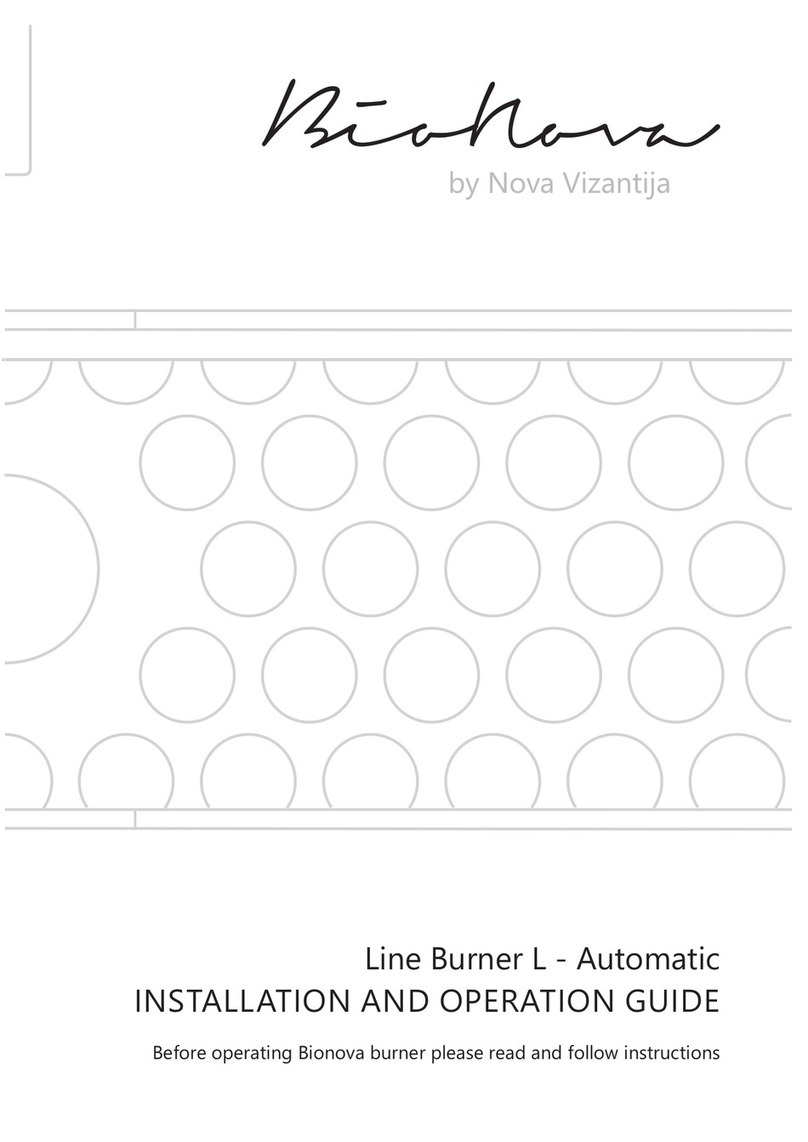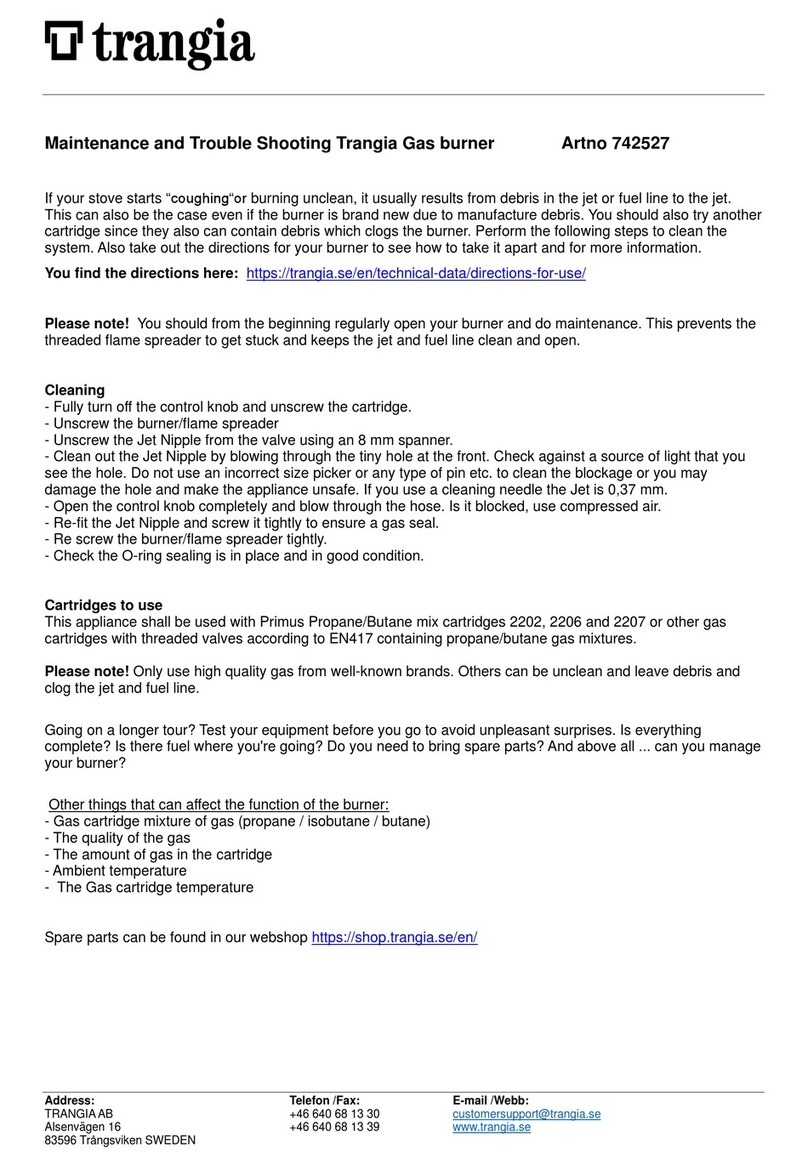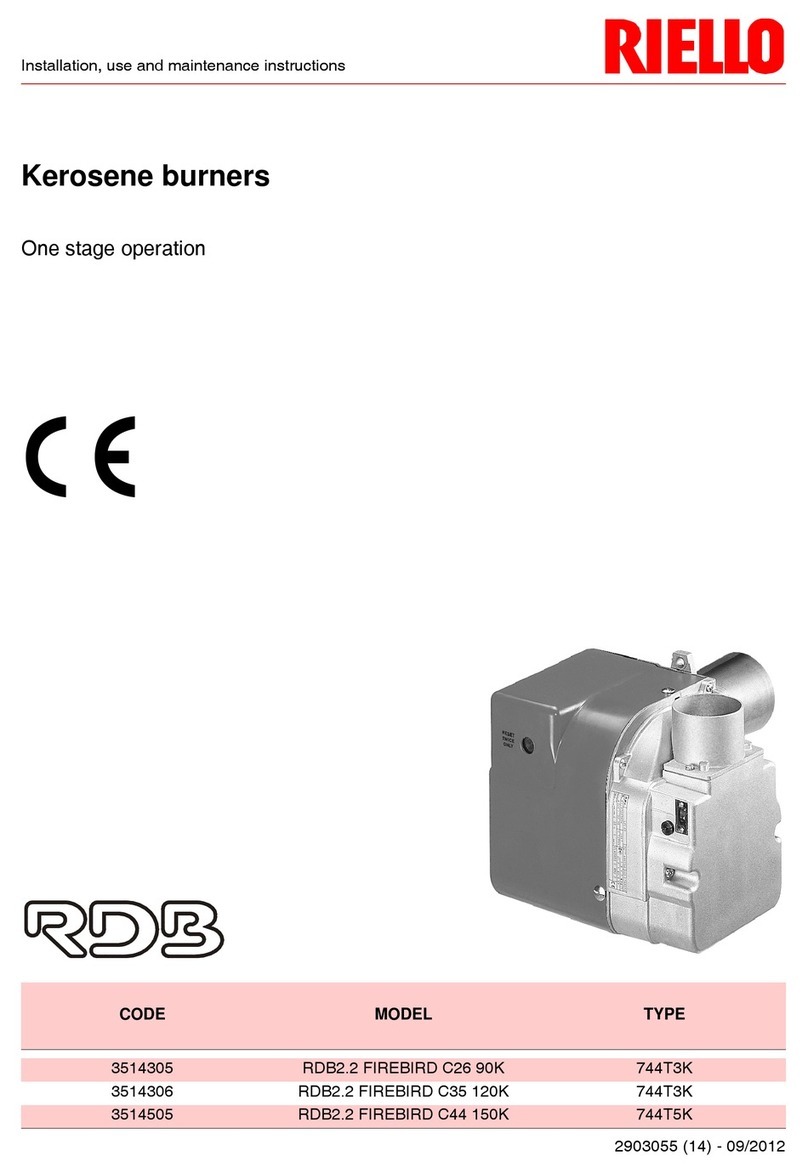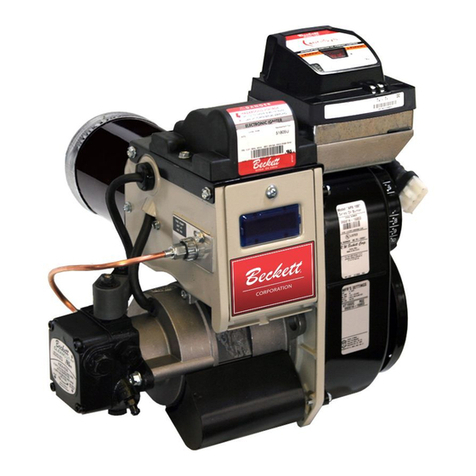Trangia Multi-fuel burner
INSTRUCTIONS
Expeditionburner for liquid fuel Art.nr: 80001
Trangia AB, Box 5, S-830 4 Trångsviken, SWEDEN
PEACE AND QUIET Congratulations, you’re the proud new owner of one of our
most advanced stoves. That must mean you’re on your way to exciting, demanding
adventures. We know that you’ve made a smart choice with this stove and when you
use it, you’ll know too. Get ready for great outdoor cooking, thanks to over a century
of success at Trangia. Being the outdoor enthusiasts we are, we understand that
you’re pro a ly curious a out your new stove and anxious to try it out as soon as
possi le. But even if you have plenty of experience with similar products, please
read the manual so you ecome familiar with the specifics relating to this stove.
All of us at Trangia hope that you will take the time to sit down and enjoy the peace
and quiet unique to food preparation in the Great Outdoors.
SAFETY FIRST! When you use your Trangia Multifuel Burner (from now on called
TMFB), you’ll e handling highly flamma le fuels. If used incorrectly, you will e
putting yourself and everything around you in danger. Make sure that you’ve
understood everything in this manual efore using the stove. Try it out and get to know
it properly efore you head out for adventure. Check that no fuel is leaking efore
you light the stove. If you have spilled any fuel, the safest thing is to move the
stove. If you discover fuel leaking from any part of the stove, the leak must e taken
care of efore the stove is used. Never use a stove that is leaking fuel.
The TMFB is designed for outdoor use only. A lit stove consumes oxygen and
gives off car on monoxide. If you use the stove indoors in an unventilated area or in
a tent, you run the risk of falling victim to car on monoxide poisoning. Make sure
that you never hold your face or any other part of your ody over the stove. Also
make sure you keep your clothes away from the stove. Many materials used for
outdoor clothing, sleeping ags, etc. are highly flamma le. Be very careful when
lighting a stove that has just een used. A hot urner can vaporize the fuel. The fuel
may ignite explosively. Allow the stove to cool properly efore lighting it again. Never
leave the stove without supervision. Never leave children unattended near the stove.
Use TMFB only for cooking food and oiling water.
The TMFB is a multifuel stove. This means that you can use a num er of different
liquid fuels, such as gasoline, diesel and kerosene. Unlike propane gas, these are
often easy to get hold of even in the most remote corners of the glo e. They also
make your stove considera ly more powerful when used during winter trips.
Preparing food on a multifuel stove using liquid fuel is slightly more complicated than
using a gas stove. First off, the fuel has to e pressurized in order to make the
stove as hot as possi le.
The gas in a gas ottle is already pressurized when you uy it from the shop, ut
the liquid fuel you put in your fuel ottle is not. Therefore, you have to pump up the
pressure in the ottle yourself. You also need to preheat the stove for a short time
using a squirt of fuel. Preheating involves heating up the urner to such an extent
that the fuel is vaporized when it passes through the urner’s nozzle. Vaporized fuel
urns efficiently with a lue flame and a hissing sound.
When your food is cooked and you want to shut off the stove, you turn the entire fuel
ottle to OFF position. This places the pump in a position where y air comes out of the
ottle instead of fuel. When the fuel remaining in the hose has urned, the flame goes
out on its own and the pressure remaining in the ottle seeps out. If you turn off the
stove using the control valve only, fuel will remain in the hose and the ottle will stay
pressurized. This will cause a fuel spill when you dismantle the stove or transport
it in your pack.
The following pages show you how to use the stove, step- y-step.
1 - Fill the bottle with fuel and 1 screw on the pump. Do not fill the fuel ottle to
the rim. It should only e filled a out ¾ full. You have to leave some space
for the pump and the air that will e compressed when you pump up the
pressure.Check that the seal is positioned correctly in its groove efore you
turn the pump into position. The seal must e flat and even all round. Screw
on the pump properly and wipe off any spilled fuel. Read more a out
various fuels in the chapter on fuels.
WARNING! Make sure that you stay well away from a lit stove or naked flame
when you are filling the ottle with fuel. Use only Trangia fuel ottles.
2- Fold out the fuel control valve and make sure that it’s in the off position. It gets very hot under
the stove, so remem er to place the stove on a firm ase which cannot catch fire. Make sure that
the control valve is closed efore pumping pressure into the ottle.
WARNING! Do not place the stove on or near flamma le materials. Avoid exposing the fuel
ottle to heat. The ottle may explode if it is exposed to heat.
3- Clear the nozzle in the burner. All fuels contain contaminants that can lock the nozzle in the
urner. The TMFB has a uilt-in clearing needle that is used to clear the nozzle with ease. Move
the multitool a few times directly eneath the urner’s ase nut. The magnets on this tool force
the needle to move, there y clearing the nozzle. Get into the ha it of clearing the stove efore
you start preparing food. This will reduce the risk of the nozzle in the urner getting locked. See
the section entitled “ Maintenance & Cleaning and” if the stove functions poorly even though it
has een cleared using the multitool.
4- Connect the fuel hose to the pump’s quick connect. Make
sure that the fuel feed valve is closed (turned fully
clockwise). Check the o-ring on the tip of the fuel hose.
Replace the o-ring if it is damaged, missing or worn. Fit the
fuel hose into the quick connect and make sure the ayonet
joint locks.
5- Pump up pressure in the fuel bottle. The fuel in the ottle is
not pressurized, so you have to pump up pressure efore the
stove can e lit and used. The fuel ottle can e placed in two
different positions, with the word ON or OFF on the top of the
pump. Place the ottle in the ON position when you want to use
the stove. If the fuel ottle is full (3/4 is full), you will need to
pump around 25 times. Pump a out 40 times if the ottle is
half full or less. There must e firm resistance in the pump
when you reach the stove’s working pressure. Open the fuel
feed valve fully. The air pressure in the fuel ottle is crucial to
the heat of the stove. When preparing food, you may have to
do some more pumping in order to maintain maximum heat.
However, if you pump up too high a pressure the fuel flow will
e too great resulting in a yellow flame.
WARNING! Make sure that no fuel leaking out efore you light the stove. Never light a stove that
is leaking fuel.
6- Release a small amount of fuel for preheating. The stove’s urner has to e hot to allow
the liquid fuel to vaporize at the nozzle and urn efficiently. Therefore, you have to preheat
the urner efore you can start preparing food. This is done y first releasing a squirt of fuel
and allowing it to urn for a short time, heating up the nozzle in the urner. The preheating time
varies depending on what type of fuel you are using. For example, gasoline is vaporized more
readily than kerosene and requires less preheating. Preheating takes longer when it is cold
and if the stove is not protected from the wind. Start y opening the control valve for two
seconds. It is difficult to see how much fuel has run out onto the wick, ut as time goes y you
will get a feel for this. Proceed with caution as you familiarize yourself with your stove.
WARNING! Check for fuel leaks at the ottle, pump, hose and urner efore lighting the stove.
- Light the fuel and wait until the flame has almost burned out. Light the fuel at the wick using a
match or
lighter. The wick is the white pad in the center of the urner, in the ottom of the cup. This is
accessed via one of the holes in the cup. Of course, it is important to make sure that you
never hold your face or any other part of your ody directly over the stove when you light it.
The fuel may ignite explosively. If the stove cannot e lit, you might not have released
enough fuel. If this is the case, repeat step 6.The fuel will urn with a yellow, flaring flame
and heat the urner. Wait a short time until the fuel has almost urned out and the flame
has ecome small.
WARNING. Keep children away from the stove and never leave it without supervision.
8- Open the control valve again and adjust the flame until it turns blue and there is a hissing
sound.
Once the preheating flames are almost out, open the control valve again y a out a quarter
turn. If the urner is hot enough, the fuel will vaporize and e ignited y the preheating
flame. The flame should then turn luish and hiss gently after a short time. If the vaporized
fuel does not ignite, light it carefully with a match. A yellow, flaring flame means that the
urner is not hot enough or that you have opened the control valve too far. Start off
y closing the control a little. If the flame does not turn lue after 10-15 seconds,
the urner is not hot enough and you have to preheat the stove for a little longer. In
this case, close the control valve one more time, wait until the flames are almost
out and then open the control valve again. When the stove is urning as it should,
you can gradually open the control valve and make it hotter. Maximum heat is
attained when the control valve has een opened y a out two turns. If you open it
y more than two turns, you will use up more fuel without making the stove any
hotter. If the flame flares up and turns yellow, turn down the control slightly and
wait until the flame has turned lue again.
The urner is designed to urn est and give maximum heat with a pan in place. Once
the stove has een urning for a while, it may e a good idea to pump a couple of
times in order to maintain pressure in the ottle. Too little pressure in the ottle will
result in poor performance. Too much pressure will also lead to poor performance
and a yellow, flaring flame. With a little practice, you will learn how often and how
much to pump in order to maintain an effective flame.
WARNING! Never move a hot stove or a stove that is in use.
9 - Shut off the stove by turning the bottle to OFF position. If you want to avoid
annoying fuel spills when you
dismantle and transport the
stove, shut it off y turning the
fuel ottle to OFF position. OFF
will then e visi le from a ove
on the pump. The fuel in the
hose will now urn up and the
remaining pressure in the ottle
will seep out. The flame will not
go out immediately, ut will urn
for a few minutes depending on
which fuel you are using and
how open the control valve is.
To release the pressure in the fuel ottle faster, you can let the stove urn at full
throttle. It will take a out 30-40 seconds for the flame to extinguish, and another 30
seconds for the remaining air to seep out. If you have shut down the stove y
closing the control valve only, you will have to release the pressure in the ottle y
way of the pump. This entails a great risk that fuel will spill on you and your
equipment. If the stove is to e used again without eing moved, you can switch off
the stove using the control valve. Allow the stove to cool properly efore lighting it
again.
WARNING! Be very careful when lighting a stove that has just een used. A hot urner
can vaporize the fuel. Vaporized fuel is very difficult to see. There is a risk that the fuel
will ignite explosively and you get urned.
10 - Let the stove cool down. Allow the stove to cool properly efore packing it. We
recommend that you leave the control valve open when you have shut off the stove y
turning the ottle to the OFF position. If you close the valve too tight when the stove is
hot, it may e hard to open the next time you use the
stove.
11- Remove the fuel hose. Close the fuel feed valve
fully. Remove the fuel hose y releasing the ayonet
joint and then pull the hose out of the quick connect.
Sometimes there may e a little pressure remaining in
the ottle which seeps out when you disconnect the
quick connect. The same is true when you unscrew
the pump from the ottle. Turn your face away from
the stove to protect your eyes when separating the
quick connect. Be sure to apply the cover on the tip of
the fuel hose so dirt will not enter.
WARNING! Never disconnect the hose immediately
after switching off the stove. Fuel may splash on the
hot urner and ignite.
FUELS
The TMFB is a urner designed to use petroleum- ased fuels. Therefore, you cannot
use alcohol- ased fuel. We recommend that you use chemically pure gasoline (not
automotive gasoline) or high-quality kerosene. Under no circumstances should you
handle fuel near a lit stove or in your tent. Use a funnel with a filter when filling the
ottle so as to avoid dirt and foreign odies getting into the fuel. Never mix different
kinds of fuel. Empty the ottle entirely efore putting in a different fuel.
GASOLINE - It is often very easy to get hold of gasoline, even though the quality is
varia le. Chemically pure gasoline is prefera le. Ordinary automotive gasoline contains




